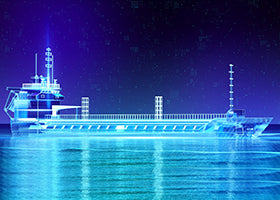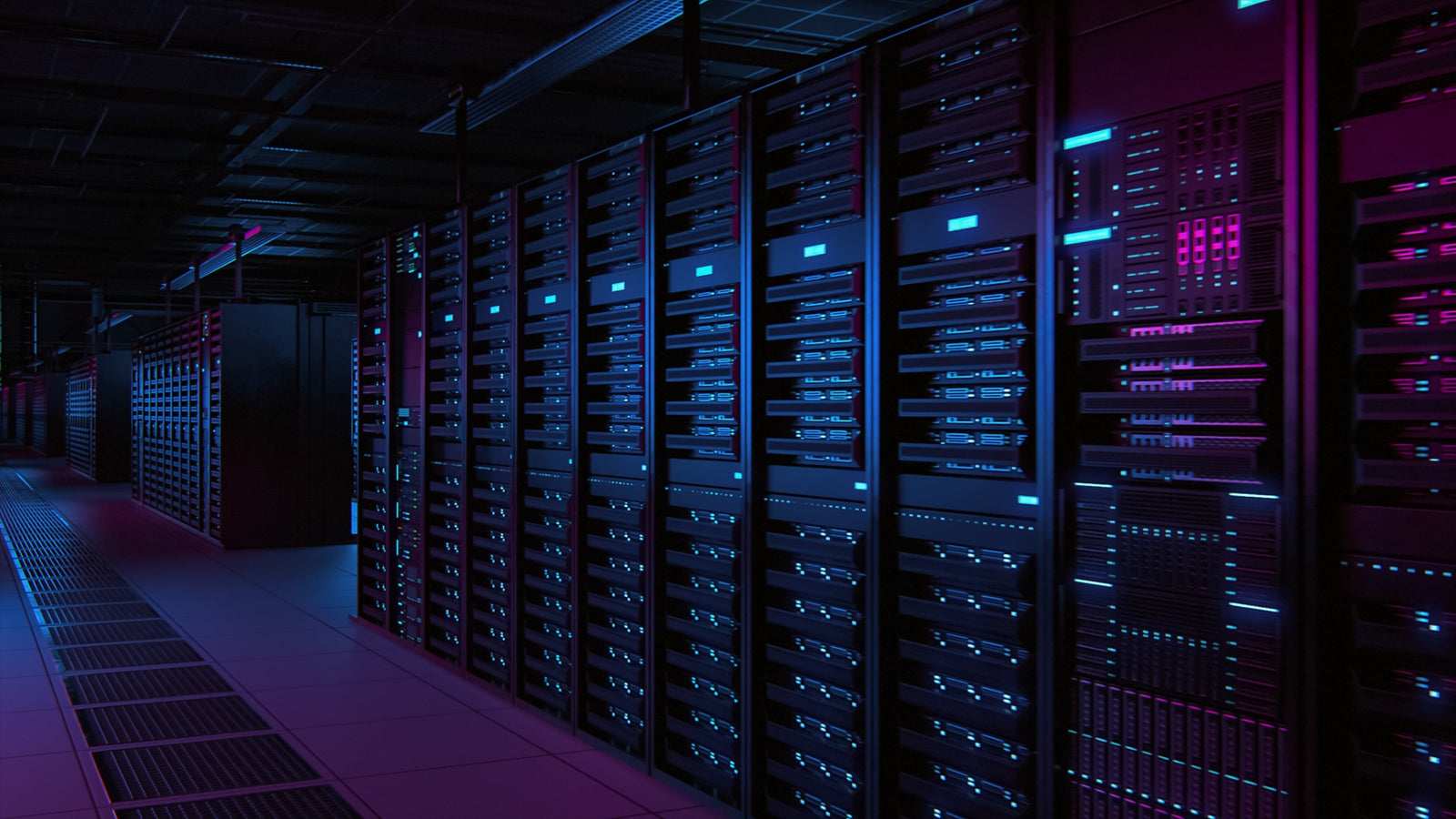
By David Warren-Angelucci, International Channel Manager
The use of Artificial Intelligence (AI) in maritime applications is quickly becoming an integral part of the shipping industry. As technology advances, so does the potential of AI to help ships better navigate their routes, identify potential hazards, and make more informed decisions. Of course, AI can be used to support a wide variety of applications in traditional manned marine vessels, but the gold standard that is being developed in maritime settings is fully autonomous vessels. This blog post will explore some of the most promising use cases for AI in maritime applications, for both manned and unmanned vessels.
Threat Detection
The most promising application of AI in maritime applications is its use in the improvement of safety. AI systems on Unmanned Surface Vessels (USVs), Autonomous Underwater Vessels (AUVs), and Autonomous Surface Vessels (ASVs) are the most effective way to increase a vessel’s ability to detect hazards threatening the safety of the vessel. Computer-assisted navigation has been commonplace in the marine industry for decades, with interactive maps of submarine terrain, reefs, and land masses, but AI has made navigational systems exponentially more effective by providing detection of dynamic hazards. For example, icebergs and ice shelves are constantly moving and shifting. AI systems can analyze satellite data and recognize patterns in ice formations. This data can then be used to identify potential icebergs and alert ships to their presence. This improved safety measure can help prevent costly collisions and reduce the risk of environmental disasters.

Besides detecting dynamic natural hazards, AI systems can be used to detect potential manmade threats. AI offers immediate detection of vessels deviating from their usual route or vessels with anomalous speed, again helping to prevent collisions and disasters. AI can also be used to detect vessels that are not broadcasting an Automatic Identification System (AIS) signal, which is required by all larger vessels, and may even alert operators to threats such as pirates, terrorists, and illegal fishing vessels. AI is increasingly being used to monitor large areas of the ocean, detect suspicious activities, and alert the operators to take the necessary precautions.
The use of AI for threat detection has several advantages. It can provide a more comprehensive overview of the ocean’s environment, including recognizing potential threats quickly and accurately. AI can also analyze large amounts of data quickly and accurately, so it can be used to identify and track suspicious activities.
Efficiency
As maritime companies continue to strive for greater efficiency, they are increasingly turning to AI to help them reach their goals. AI is allowing vessels to become more efficient and cost-effective, while also reducing the need for manual labor and increasing safety. AI is helping to make the maritime industry more sustainable and efficient, while also reducing its environmental impact.
One of the most common ways AI is being used in the maritime industry is to optimize vessel routing. AI-driven route optimization can help vessels save fuel and reduce emissions by choosing the most efficient route. AI can be used to identify the most efficient routes based on factors such as weather patterns, sea currents, heavy traffic, and the locations of ports. This allows ships to save time and money by avoiding dangerous stretches of ocean and taking the most efficient route by adjusting their routes accordingly.
Automation
One of the most exciting applications of AI in maritime applications is the use of autonomous ships. They are equipped with sensors and AI systems that allow them to navigate their routes without any human intervention. This technology has the potential to drastically reduce fuel costs and improve the efficiency of international shipping. Autonomous ships are also safer than traditional ships due to their ability to detect and avoid potential hazards.
AI is also being used to automate many of the tasks associated with vessel operation and maintenance. This can help reduce the need for manual labor, while also ensuring that the vessel is in optimal working condition. AI can also be used to monitor vessel performance and alert operators when something is not functioning as it should. This can help reduce the risk of accidents and unplanned downtime, as well as helping to improve overall efficiency.
HPC in Autonomous Shipping
Autonomous shipping is revolutionizing the transportation industry, and high-performance computing (HPC) is a key technology that is enabling this transformation. HPC is being used to power the advanced computer vision, machine learning, and artificial intelligence algorithms that are needed for autonomous ships to safely navigate the world’s waterways.
Computer vision is essential for autonomous shipping, as it allows the ship to sense and interpret its surroundings. HPC systems are used to process large amounts of data to create detailed maps of the ship’s surroundings. This data is then used to create a 3D model of the ship’s environment, which is used to detect objects such as other ships, buoys, land masses, and submarine hazards.
In addition to providing detailed 3D maps of the ship’s surroundings, HPC systems are also used to power the artificial intelligence algorithms that allow autonomous ships to make decisions. By combining data from computer vision algorithms with input from sensors, autonomous ships are able to detect and avoid obstacles and make decisions about the best route to take.
OSS Hardware in Autonomous Shipping
OSS is at the forefront of this new era of shipping, leveraging its expertise in high-performance computing, engineering, and embedded systems to improve the safety and efficiency of manned vessels, and provide solutions for unmanned vessels to move cargo from one point to another, eliminating the need for human pilots and navigators.

One of the key advantages of OSS’ autonomous shipping systems is their scalability. They can be used on vessels of all sizes and types, allowing for the seamless integration of autonomous technology into existing fleets. This scalability also extends to their systems’ computing power, which can be easily adjusted to meet the needs of any mission. OSS’ autonomous shipping systems also support a variety of advanced AI features, including real-time monitoring and diagnostics, obstacle avoidance, advanced navigation and tracking, and secure communications. These features are essential for the safe and reliable operation of autonomous vessels.
Finally, OSS’ autonomous shipping systems are highly reliable and durable. They are designed to be resistant to the harsh conditions of the open ocean, ensuring that they can be used in even the most challenging environments.
Conclusion
AI has the potential to drastically improve the safety and efficiency of maritime shipping. Autonomous ships, threat detection, and improved route mapping are just a few of the exciting applications of AI in maritime applications. As technology continues to advance, and the development of improved autonomous ships becomes commonplace, AI will become an even more integral part of the shipping industry.
At OSS, we are proud to be at the forefront of the autonomous shipping revolution. Our commitment to providing the highest quality hardware solutions for AI in marine applications is unparalleled, and we are dedicated to helping our maritime customers navigate the uncertain waters of the future.
Click the buttons below to share this blog post!

By: Jaan Mannik – Director of Commercial Sales
The term AI, or Artificial Intelligence, is everywhere nowadays and has quietly woven itself into the fabric of our daily lives. It powers the recommendations we see on streaming platforms, the navigation apps that guide us through traffic, and even the virtual assistants that answer our questions in seconds. From optimizing energy use in smart homes to predicting market shifts in finance, AI has become the invisible engine driving convenience, efficiency, and insight across industries.
In manufacturing, AI-driven robots collaborate with humans to streamline production. In agriculture, machine learning models monitor crops, forecast yields, and conserve resources. Retailers use predictive analytics to anticipate consumer needs before customers even express them. The reach of AI is no longer confined to futuristic labs, it’s in our phones, vehicles, and cities, constantly learning and adapting to serve us better.

OSS PCIe-based products deliver critical advantages for modern military sensor systems by enabling real-time data acquisition, processing, and transmission in rugged, mission-critical environments. These benefits stem from their ability to support high-bandwidth, low-latency interconnects, modular scalability, and environmental resilience, all of which are essential for today’s advanced military platforms.

Companies today are being asked to do more with data than ever before. Bigger AI models, faster insights, and workloads that don’t stay in one place, it’s a lot to keep up with. Traditional infrastructure just isn’t built for this kind of speed and flexibility.
The answer isn’t about throwing more hardware at the problem. It’s about building smarter, more agile infrastructure that adapts as demands change. And that’s where scale-out and increasingly, a blend of scale-out and scale-up come into play.